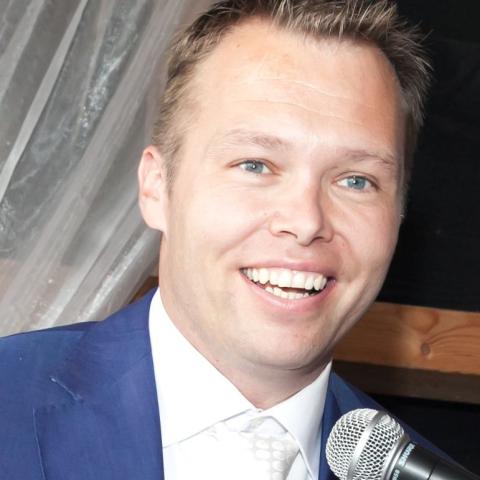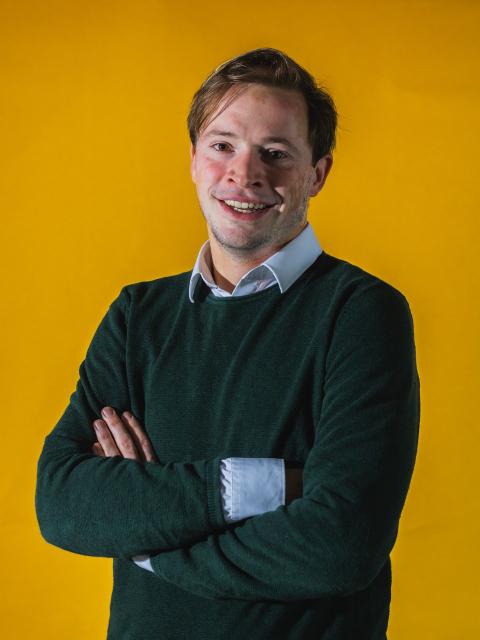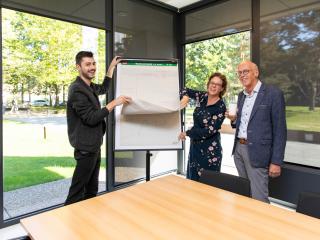Combating polarization in the Netherlands: “If we won’t acknowledge conflicts, then how can we handle them properly?”
As we redesign the Netherlands – for instance to address the housing shortage, accommodate refugees or make the energy transition possible – we regularly run into conflicts between government, businesses and citizens. For the Bindend Besturen in Brabant (Binding Governance in Brabant) project, researchers teamed up with officials from the province of North Brabant as well as municipal civil servants, but also with entrepreneurs, lawyers and citizens. The aim of the project was to find methods of preventing conflicts from turning into drawn-out legal battles with no resolution. As it turns out, there’s no one road to success when it comes to conflict resolution, but there are useful road signs along the way.
Is our society becoming more and more polarized? Opinions may vary, but the fact remains that we are facing a growing number of governance challenges involving major conflicting interests. Parties are often unwilling to compromise, and when relationships turn sour they look to the legal system to settle their disputes. We’ve seen this happen with the nitrogen crisis, the shortage of housing for refugees and migrant workers, and the construction of new housing.
The announcement of the new Environment and Planning Act provided the Province of North Brabant with the perfect opportunity to explore ways to improve its decision-making processes. Because how could a major area development project get bogged down in a dispute over a minor cultural-historical detail – a dispute that would eventually be brought before the Council of State – when everyone involved agreed on 80 to 90 percent of the decisions? And this case was no exception.
Questions to answer
“How do we become better at settling conflicts? Those were the questions we wanted to answer,” says Rick van den Berg, the province’s Housing, Work and Living Environment program manager. The Environment and Planning Act promised to settle potential conflicts through what is called participation – achieving consensus by involving stakeholders – but what that process would look like remained unclear. Through former Tilburg University president and professor of public administration Philip Eijlander, Van den Berg was introduced to professor of public administration Stavros Zouridis, and the two hit it off. That was the genesis of the Bindend Besturen in Brabant project, which was helmed by Zouridis.
New approaches to conflict resolution were also somewhat of an uncharted territory in the discipline of public administration. “Once a conflict has turned into a legal battle, it almost never deescalates in practice,” says Eva Wolf, who worked on the project together with Zouridis and Feie Herkes, a PhD candidate at the university. Wolf is assistant professor in public administration who specializes in how conflicts escalate and end up in court.

A conflict can be handled well or poorly, just like you can work together well or poorly
Eva Wolf
Of course, Wolf clarifies, judicialization serves an important function and it is sometimes necessary to take conflicts to court “But it is a shame if litigation happens as a result of taken-for-granted routines or because of prejudices parties might have, rather than because the situation actually calls for it. Litigation as a strategy should be employed carefully, as it permanently alters the relationships between parties and doesn’t always bring resolve to the existing conflict.” The current nitrogen crisis in the Netherlands actually illustrates the risks of judicialization. The strained relationship between farmers and the government can partly be attributed to the court ruling stating that the PAS program for compensating nitrogen emissions was flawed. “There were valid reasons for taking the matter to court,” Wolf explains, “but litigation could have been avoided if the balance between conflicting interests had been taken seriously in the policy process at an earlier stage.”
As a researcher, she has long been fascinated by how conflicts change once they become legal disputes. “What kind of language do the parties start using when that happens? Who gets to speak? What is discussed? All of that changes. There is a lot of research on “participation” and how to get everyone pulling in the same direction, but few people talk about how to wage a conflict – neither in the field nor at universities. Conflicts are primarily seen as problems to be avoided. But a conflict can be waged well or poorly, just like you can work together well or poorly. How is it that so little attention is paid to this? If we won’t even acknowledge conflicts, then how can we handle them properly?”
For four years, the Bindend Besturen in Brabant project not only connected academia with the worlds of provincial and municipal governance, but also with citizens, businesses and judges. Real conflicts were analyzed together, for instance about unpleasant odors produced by intensive farming or the housing of migrant workers in a neighborhood. Interviews with conflicting parties, mediation of other deadlocked disputes (such as over the location of a fast-food chain restaurant, or over the design of a small neighborhood park), webinars with people from the field, and a survey of citizens on what they see as a legitimate reason for taking a conflict to court all yielded a wealth of data and insights.
Road signs
One crucial conclusion is that the best way to handle a conflict depends on the context. From a governance perspective, there are three possible avenues: resolution through negotiation (participation); turn to politics for a solution (politicization); or go to court (litigation). There’s no one road to success, but conflicts do have certain characteristics that can serve as useful road signs along the way. For example, if the interests of the various parties can’t be measured objectively and can’t really be weighed against each other – such as the desire for a quiet or odor-free living environment – it’s better to pursue a non-legal solution. But if there’s little substantive wiggle room – for instance if one party is tied to a binding legal requirement – it doesn’t really make sense to negotiate. And if the parties are connected to each other in the longer term – such as neighbors – litigation is probably not the best avenue.
“You have to know the context and base your approach on that,” Wolf explains. “What strategy fits the context well, and what strategy is at complete odds with it? The road signs created by the researchers to help people navigate conflicts more effectively are described in a book entitled Unbinding and binding governance of the environment (in Dutch).
For Rick van den Berg, the book is a successful culmination of the project. “I’m very happy with it. A book like this helps keep the subject alive, and it’s a way to share our experiences with a wider audience. For myself, the real eye-opener was the three-part division into participation, politicization and litigation, and looking for the interplay between those approaches on the basis of described effects and side effects. Choosing a specific approach is a much more conscious process for me now. Participation, which we’d initially pinned a lot of our hopes on, turned out to be just one of the solutions.”

The intensive collaboration between officials, researchers and people from the field meant that we had to immerse ourselves in each other’s worlds
Rick van den Berg
The project’s inclusion of a broad range of voices in the search for solutions was also helpful, he says: “The intensive collaboration between officials, researchers and people from the field meant that we had to immerse ourselves in each other’s worlds. Which was a lot of fun, but we also learned a lot. Ultimately, this leads to better decision-making processes. We have built a network of people who speak the same language to arrive at the right approach.”
Understanding each other
Knowledge manager Daan Mulders, who was involved in the project as part of a special civil service team that brings knowledge from the government and academia to the field found the search for that shared language challenging at times. Together with his colleague Menno van Rosmalen, he supervised project meetings with the various target groups. These meetings were initially held online because of the Covid lockdowns, but the last one took place on the university campus.
“The participants were really excited,” he says. “There’s so much energy surrounding this topic. We created this great space in which we were able to learn together from very concrete cases. But in order to understand each other, we had to acknowledge our different starting points. We should do that more often.”

It would be nice if people could really integrate this search into their work
Daan Mulders
The next question, though, is how to ensure that the lessons learned stay top of mind and are passed on. That’s not a given, according to Mulders: “It would be nice if people could really integrate this search into their work.” Van den Berg once again hopes that the introduction of the Environment and Planning Act in 2023 will help to achieve that. According to Wolf, officials will have to approach conflicts with an open mind, rather than rely on prior assumptions. “You have to be vulnerable to figure out what’s really going on in a conflict,” she says. “But the organization needs to be supportive to facilitate that.”
Wolf believes that the polarization in our society is fueled by an inability to engage with each other. Avoiding conflict doesn’t solve anything, and talking is essential in handling conflicts well. Perhaps that’s not just a lesson for public administrators, but something we can all take to heart.
Date of publication: 24 November 2022



